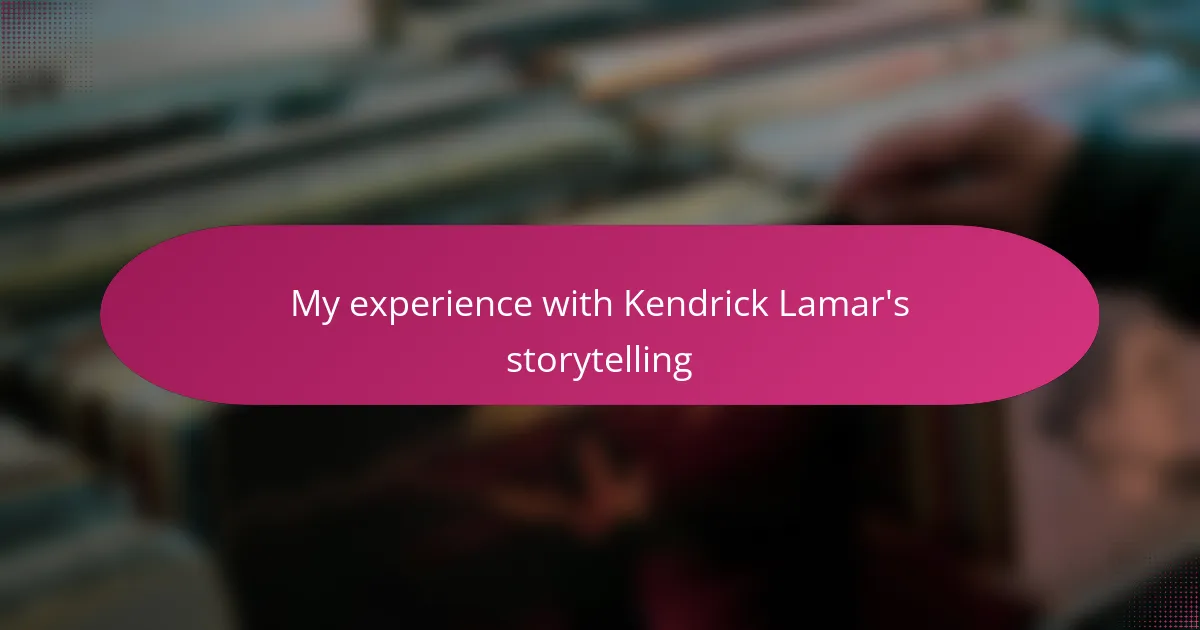Key takeaways
- Storytelling in rap, particularly in Kendrick Lamar’s work, blends personal experience with social commentary, creating relatable and emotionally impactful narratives.
- Kendrick’s use of vivid imagery, shifting perspectives, and nonlinear storytelling keeps listeners engaged and encourages deeper emotional connections.
- Embracing vulnerability and authenticity enhances storytelling, allowing artists to connect with their audience on a personal level.
- Layering perspectives enriches narratives, leading to a multi-dimensional experience that invites listeners to explore different viewpoints and emotions.
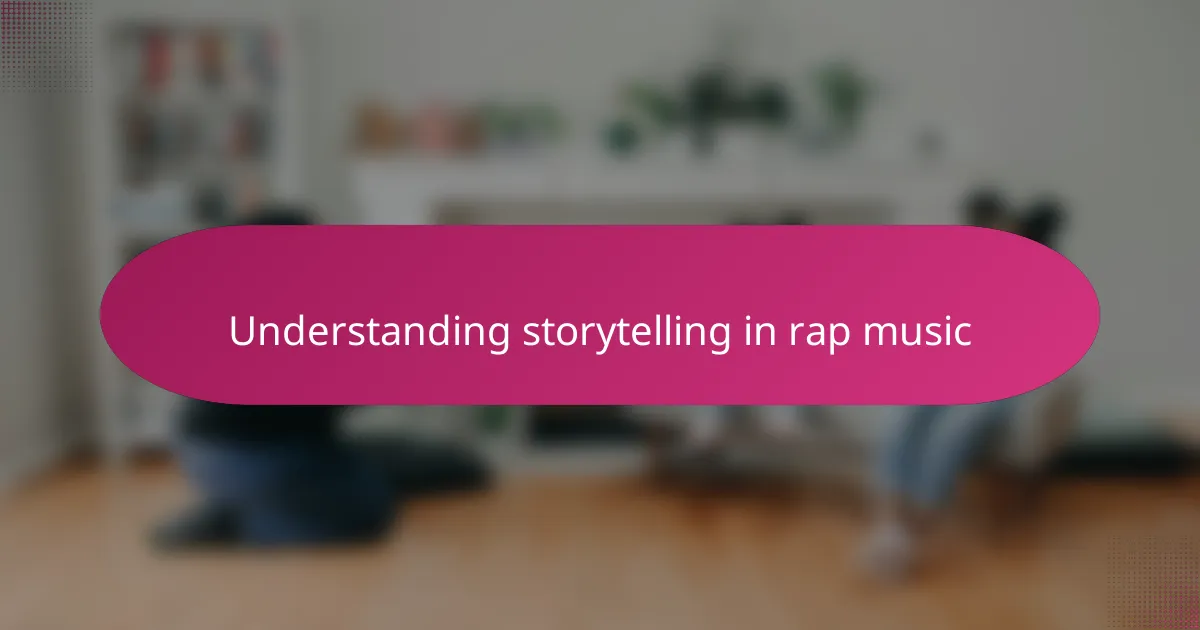
Understanding Storytelling in Rap Music
Storytelling in rap music is more than just rhyming words over a beat; it’s about painting vivid pictures through lyrics that connect deeply with listeners. Have you ever found yourself hanging onto every word, as if the rapper is narrating a personal diary? That’s the power of storytelling—it turns songs into shared experiences.
When I first really paid attention to the stories rappers told, I realized how much emotion and nuance they packed into their verses. It’s like each line carries a piece of their soul, making you feel their struggles, triumphs, and moments of reflection. Isn’t it amazing how a few bars can transport you to another place or time?
What makes storytelling in rap so compelling to me is its raw honesty. Unlike some polished genres, rap often embraces imperfections and gritty realities, which makes the stories feel authentic and relatable. Have you noticed how those authentic tales stick with you long after the music stops? That’s storytelling at its finest.
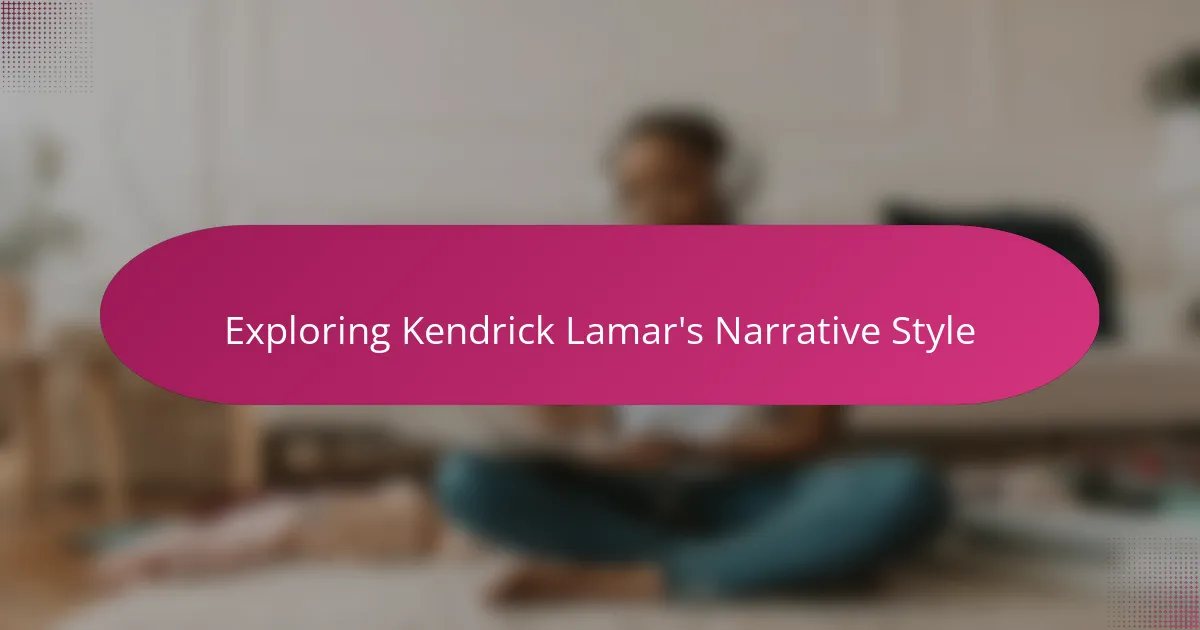
Exploring Kendrick Lamar’s Narrative Style
Kendrick Lamar’s narrative style struck me from the first time I really listened closely to his verses. He doesn’t just tell a story; he layers it with complex emotions and perspectives, almost like you’re living through his experiences. Have you ever felt completely immersed in a song, as if someone is handing you a key to their private world? That’s Kendrick’s gift.
What fascinates me most is how he weaves social commentary seamlessly into personal tales, making you reflect on bigger issues without losing the emotional core. I remember hearing “Swimming Pools” and being drawn not just to the catchy hook, but to the internal struggle behind the celebration. It’s storytelling that challenges you to think and feel simultaneously.
Also, Kendrick’s use of vivid imagery and shifting voices makes each track feel like a mini-movie. Sometimes I catch myself replaying certain verses to catch details I missed the first time, because his stories unfold like puzzles. Have you noticed how every word seems intentional, inviting you to dig deeper beneath the surface? That’s the brilliance of his narrative craft.
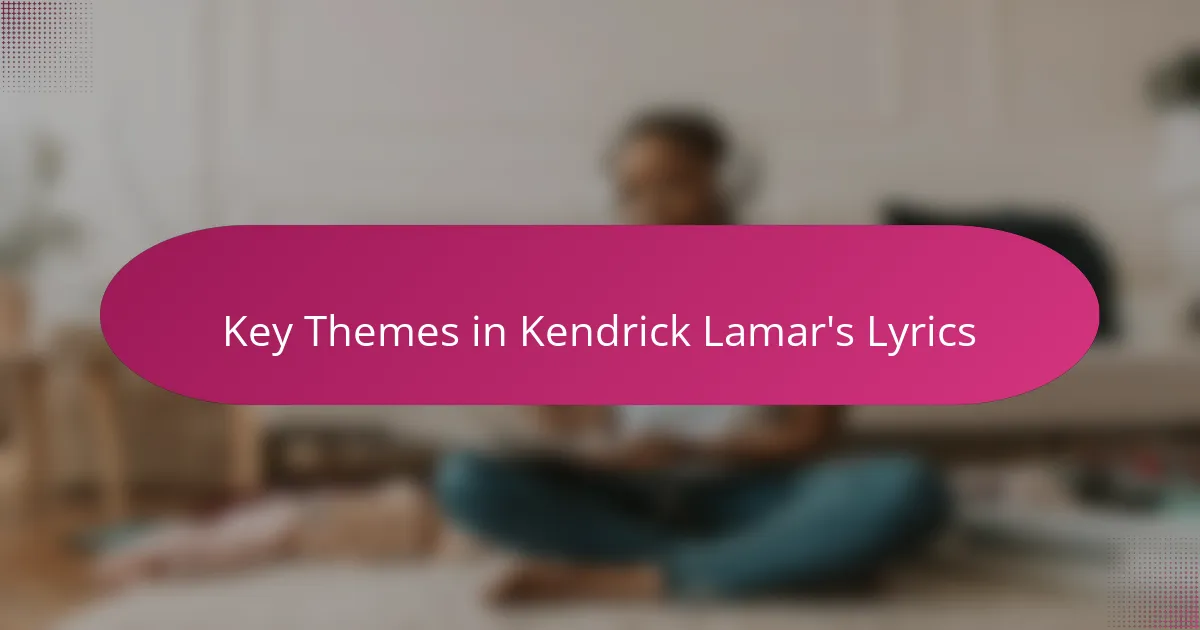
Key Themes in Kendrick Lamar’s Lyrics
One of the key themes I’ve noticed in Kendrick’s lyrics is the struggle with identity and self-worth. Listening to tracks like “u” or “Alright,” I feel this powerful tension between vulnerability and resilience. Have you ever experienced that mix of doubt and determination? Kendrick captures it so honestly, it feels like he’s speaking directly to that part of me.
Another theme that really hits home is social injustice and systemic oppression. Kendrick doesn’t just mention these issues—he dives deep into their impact on his community and himself. When I listen to “The Blacker the Berry,” I can’t help but reflect on how those harsh realities shape lives, including my own perspectives. How often do you stop to think about the stories behind the headlines? Kendrick pushes me to do just that.
Finally, redemption and growth appear throughout his work in ways that are both personal and universal. It’s inspiring to hear him confront his past mistakes and seek a better path, like in “Sing About Me, I’m Dying of Thirst.” That raw honesty reminds me that change is messy but possible. Have you ever felt that flicker of hope despite your struggles? Kendrick’s storytelling assures me I’m not alone in that feeling.
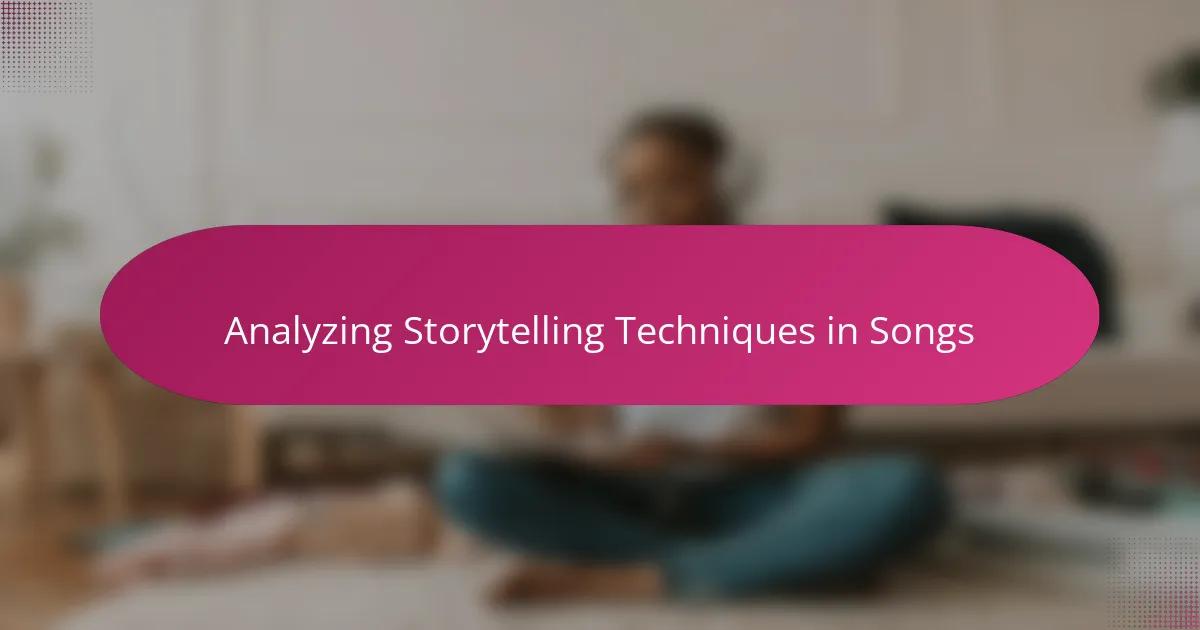
Analyzing Storytelling Techniques in Songs
When I break down Kendrick’s storytelling techniques, I’m struck by how deliberately he structures his songs. He often uses nonlinear narratives, jumping between past memories and present reflections, which keeps me on my toes and deeply engaged. Have you noticed how this approach makes the story feel more like a lived experience rather than a simple recap?
What really stands out to me is his mastery of metaphor and symbolism. In tracks like “Money Trees,” he doesn’t just say things outright; instead, he paints layers of meaning that reveal themselves gradually. It’s like uncovering hidden chapters in a book, making every listen a fresh discovery.
Another technique I appreciate is his use of shifting perspectives. Sometimes Kendrick raps from his own viewpoint, other times he embodies people around him, creating a chorus of voices that together form a nuanced, multi-dimensional story. Doesn’t that make the storytelling feel alive and intensely real? It certainly deepens my connection to the music.
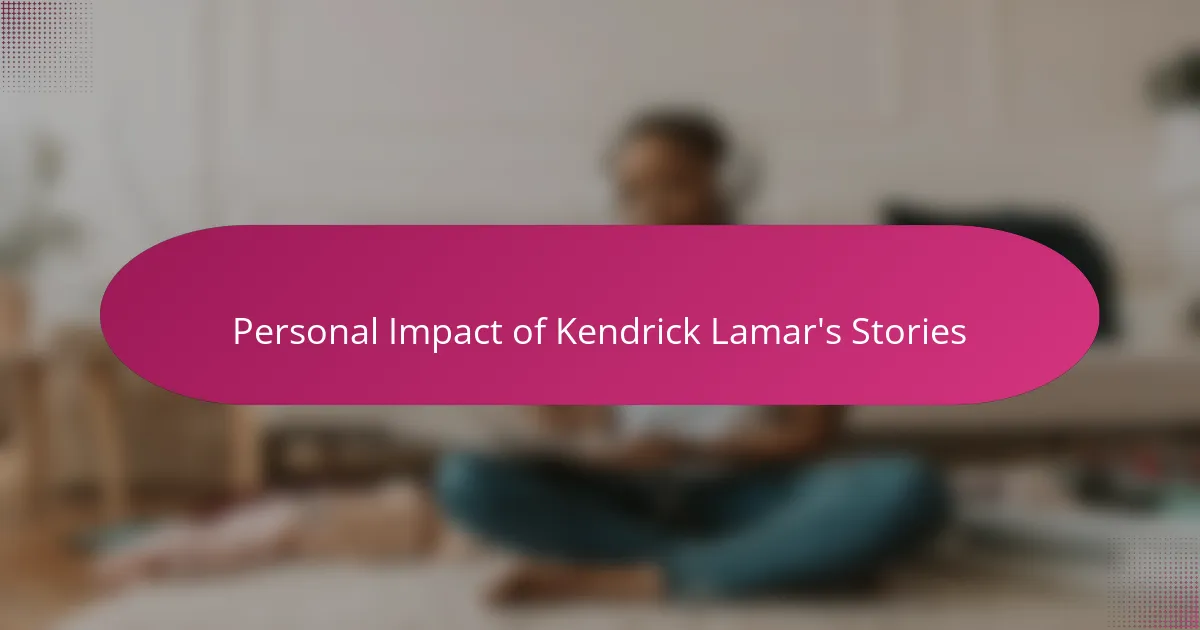
Personal Impact of Kendrick Lamar’s Stories
Listening to Kendrick Lamar’s stories has genuinely shaped how I perceive not just rap, but storytelling itself. There was a moment when a particular verse hit so close to home that it felt like Kendrick was narrating my own struggles back to me. Have you ever experienced that uncanny feeling of finding your story reflected so clearly in someone else’s words?
What I find most powerful is how his narratives don’t just entertain—they challenge me to confront uncomfortable truths about myself and the world around me. I remember replaying “Sing About Me, I’m Dying of Thirst” late into the night, feeling a raw mix of vulnerability and hope wash over me. It’s rare for music to evoke that depth of emotion, and Kendrick’s storytelling always manages it.
Sometimes, I catch myself reflecting on his songs days after hearing them, realizing that his stories prompted real changes in how I think or feel. Isn’t that what profound art should do? For me, Kendrick’s ability to tell stories that linger long after the last beat is a testament to his impact—not just as a rapper, but as a storyteller who touches the soul.
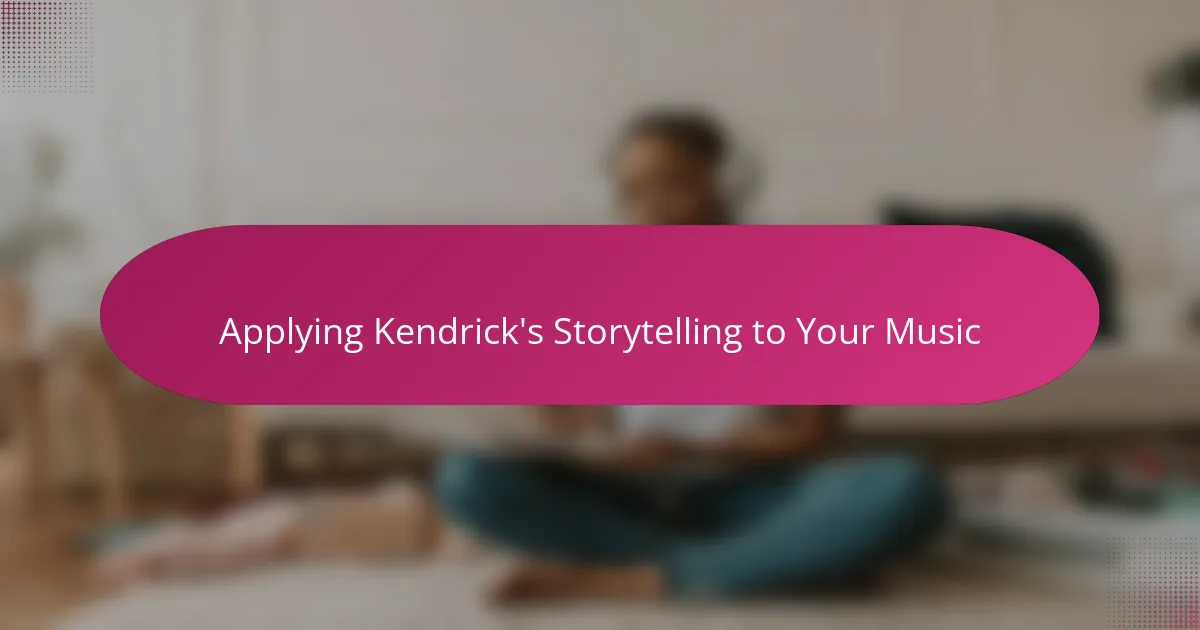
Applying Kendrick’s Storytelling to Your Music
Applying Kendrick’s storytelling techniques to my own music was a game-changer. I started paying close attention to how he uses vivid imagery and multiple perspectives, which pushed me to move beyond simple narratives. Have you ever tried stepping into different characters’ shoes in your songs? It’s challenging but deeply rewarding—like letting listeners explore a world from angles they hadn’t considered before.
One thing I adopted right away was embracing emotional honesty, even when it felt uncomfortable. Kendrick taught me that vulnerability isn’t a weakness; it’s what makes a story unforgettable. I remember writing a verse about my own doubts and fears, and the process felt like therapy. Could opening up like that actually connect with people on a deeper level? In my experience, absolutely.
Also, structuring stories non-linearly added layers to my music that I hadn’t expected. Shifting between past and present moments keeps the listener engaged, just like in Kendrick’s songs. When I first tried this, I noticed friends asking me to replay certain lines because they wanted to catch every detail. Isn’t that the kind of connection we all aim for as storytellers?
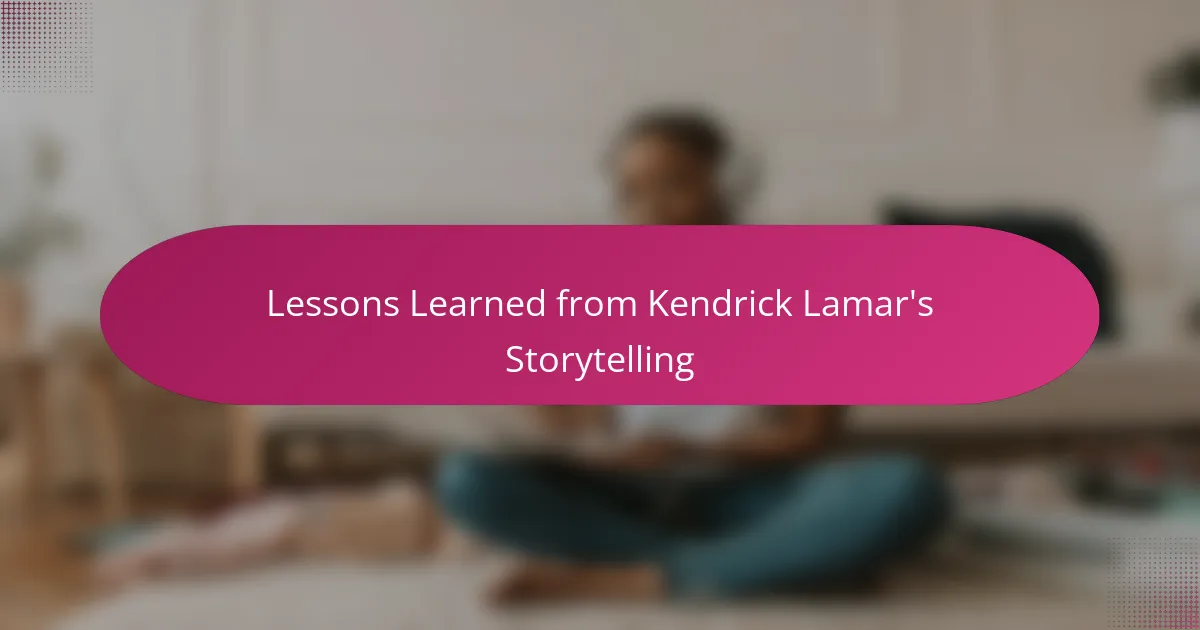
Lessons Learned from Kendrick Lamar’s Storytelling
One lesson that really stuck with me from Kendrick’s storytelling is the power of vulnerability. I remember the first time I truly listened to “u” and felt this raw exposure of pain and self-doubt that was unlike anything I’d heard before. Have you ever noticed how opening up honestly, even about your flaws, can create a stronger bond with your audience? Kendrick showed me that authenticity resonates far more than perfection.
Another key takeaway is how layering perspectives enriches a story. Kendrick doesn’t just share his own experience; he invites us into the lives and minds of others around him, making the narrative multi-dimensional. When I tried this in my own writing, it felt like I was handing listeners a richer, more complex emotional journey. Isn’t that what we all want—to feel the story from different angles instead of just one?
Finally, his use of nonlinear storytelling taught me to trust the listener’s engagement. Instead of a simple straight line, Kendrick’s songs jump between memories, thoughts, and emotions, demanding active listening. I once shared a track with friends that employed this technique, and their eagerness to rewind and discuss the layers was unforgettable. Doesn’t a story that unfolds like a puzzle make the experience that much more compelling?
